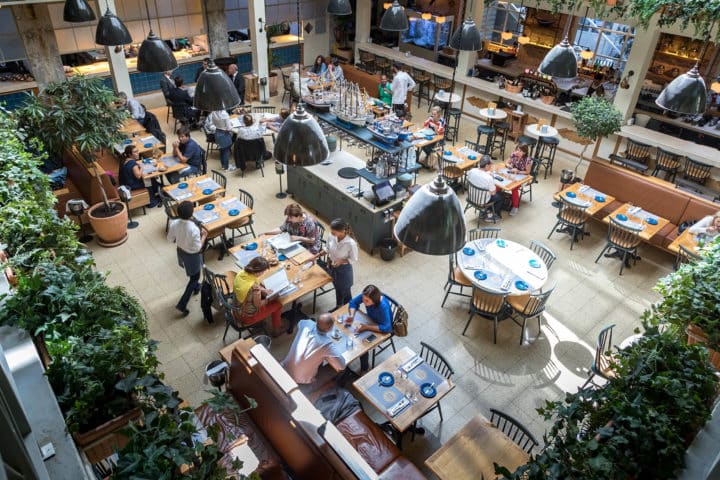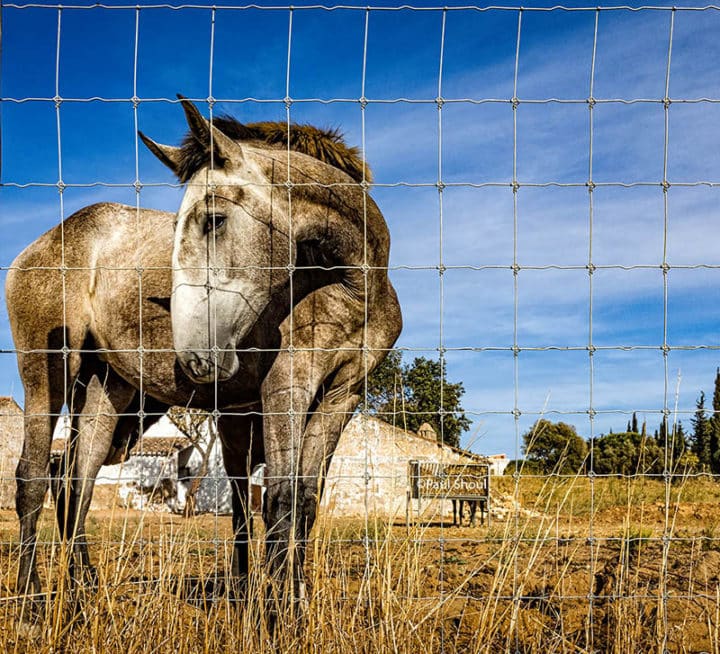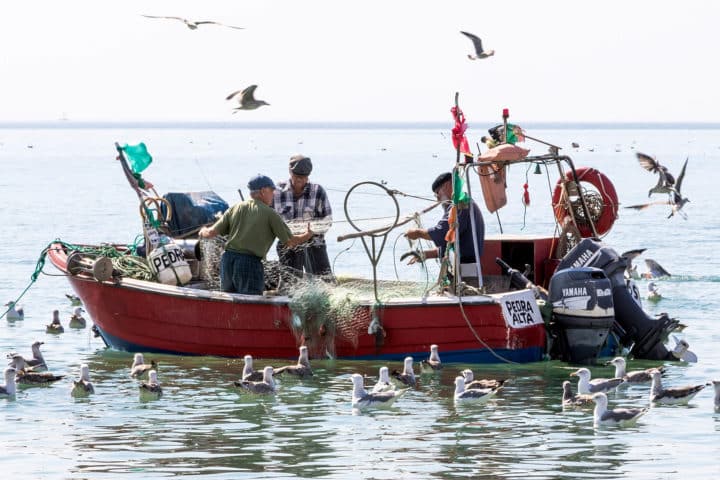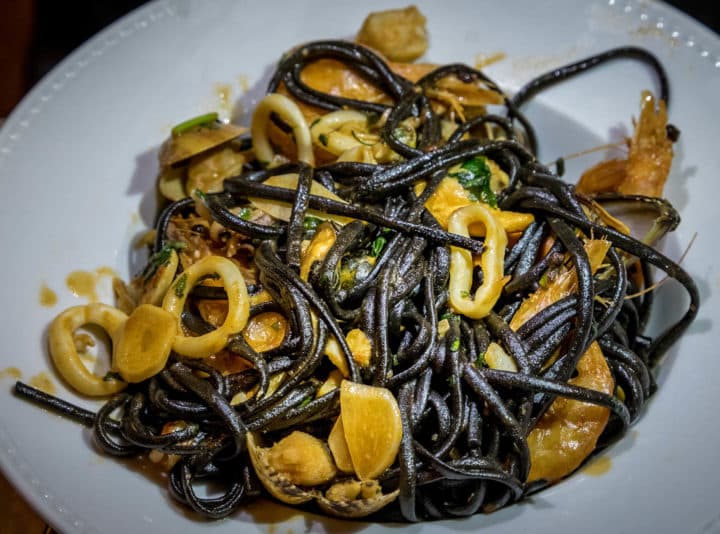
On a recent road trip from the historic hills of Lisbon to the sunny cliffs of the Algarve coast, I had the chance to explore Portugal and why it has become such a hot travel destination in the past few years. There are obvious reasons: historic cities, spectacular beaches and coastline, friendly people, and of course fantastic food and wine.
But other forces are at work. It’s an incredible bargain for your money, and knock on wood, it’s still very safe. After too many global terrorist attacks—some specifically targeting tourists—and the increased insecurity of travel to the United States (“the Trump Slump”), international tourists, especially the British and Irish, are flocking to Portugal. It was rated among the top 12 safest countries on the planet in 2017 by the World Economic Forum and is on its way to set another record year of growth for foreign tourist arrivals.
If you are or ever were thinking about going to Portugal, do it now.
Lisbon

It had been four years since Max Hartshorne, a fellow travel writer, and I had been in Lisbon. First order of business was to head to find an outdoor cafe and have a beer. At Restaurante Cais Das Colunas (R. da Vitória, 1100-044 Lisboa, Portugal), we ordered a pint (€2) and sat back to observe. The streets were packed and jubilant, a far cry from the unemployment and somber outlook during the 2011-2014 debt crises.
Lisbon is undergoing a facelift. Construction and renovation are everywhere. Thankfully the original architecture and charm of this city remains the same. Just a little cleaner and with better bathrooms. This is great news for travelers, in the form of better services and more accommodation options, but not for the locals looking for an apartment to live in the city, as many landlords are starting to rent exclusively through Airbnb.

We had two meals in Lisbon that fell on opposite ends of the kitchen scale:
Pastelaria Yes (Av. Columbano Bordalo Pinheiro 70, 1070-064 Lisboa) serves simple Portuguese food at a reasonable price. Grilled bacalhau (salt cod) and potatoes, a shrimp omelet and three pitchers of local white wine all for around €28.
Salt cod (bacalhau) is an obsession for the Portuguese but a tough sell to the uninitiated. They say there are over 365 different recipes for bacalhau, one for each day of the year. It’s the most popular food in Portugal and always served during religious holidays. If you want to eat like a local, you have to eat bacalhau. When desalinated (rinsed three times and soaked in fresh water for 24 hours), the once hard-as-rock, pungent, dried plank emerges soft, flaky and fantastic with a concentrated flavor that cannot be matched by fresh cod.

In 2014 Chef Jose Avillez’s Belcanto restaurant was awarded two Michelin stars. Building on his success, he has opened a variety of restaurants around Portugal. If you don’t have time to wait two months for a table at Balcanto, or the scratch to drop (€165) for a tasting menu, there is another option in Lisbon to experience his take on Portuguese gastronomy.
Barrio Avillez is located in Chiado, at Rua Nova de Trinidad in Lisbon. Spacious, comfortable and airy, it comprises three restaurants in different sections of a sprawling complex. Taberna is devoted to hearty food, Pateo is focused on seafood and meat, and Cantina Peruana offers contemporary Peruvian cuisine. Hidden behind a secret door in a bookshelf is Beco, an intimate cabaret that offers dinner and a show. Hats off to the designers that created the feeling of a clandestine speakeasy.

We had a lunch of small plates that were delicious: giant red grilled shrimp (€8.5), “Spicy Horse Mackerel Cone with Pickles and Smoked Mayonnaise” (€4.5), and a lettuce wrap with crispy cod (€5). Bario Avillez is a total dining experience. Plan to linger and have many glasses of wine.
Where to stay in Lisbon
The place to be in Lisbon is the old city in and around the Palace Square (Praça do Comércio) once the center of power when Portugal owned the world from 1400 to 1700. Wander the old hilly city streets, take a mandatory ride in one of the old streetcars (€6.15 for a full-day pass). And walk along the newly renovated riverfront.
Try the Hotel Açores Lisboa (Praça da Europa 2, Palacete do Relógio, Cais do Sodré, 1249-289 Lisboa; +351 296-301-868).
Exploring deeper in Lisbon
If want to explore further, rent a bicycle at BikeIberia. Super nice folks, right by the river and just a five-minute walk from downtown. We rented one of their state-of-the-art Giant ebikes (€35 daily). The hills of Lisbon are steep and the extra power boost is a godsend. Or, you can just call Uber. Uber makes getting around Lisbon a breeze and gives you the freedom to explore and get lost. We never waited more than five minutes for a car to arrive and did not spend more than 7 euros for any of our trips within the city.
Driving to the Algarve coast

That moment when you first merge into traffic in a foreign land in a rental car is always a little sketchy. The comforting voice of the Google Maps lady can tell you to go left or right in perfect English, but she can’t translate the language of traffic. You just have to dive in and get a feel for the current.
Max and I speak Boston. The foundation of our traffic language is simple: go fast, cut everyone off, get over it, and don’t screw things up by being too polite. In Portugal, not so much. Drivers are incredibly polite. They move over and let you in. Take it slow, go with the flow, enjoy the scenery, stop for a coffee.
After picking up our rental car from Auto Europe, we drove three hours on the A2 highway south from Lisbon to Salema.
The Algarve, stop 1: Salema

The Algarve coast in the southwest of Portugal is no secret. Beautiful beaches, majestic cliffs, picture-perfect villages, and outstanding seafood is a powerful draw. Gradually, every inch of the coast with access to a beach is being developed, but there are still some patches of old world serenity.
Salema has maintained its small-town feel. Fishing boats still go out from the main beach for octopus and sardines. The pace is slow and leisurely. It’s only three hours by car from Lisbon. To the food…

We arrived late in Salema after a long drive. Hungry and thirsty. Our expectations for dinner were minimal; any place with food that was open would do. Our neighbor at our hotel said, “Walk down to the beach and take a left; you might get lucky and find a table at the Mira Mar.” And at Mira Mar (Travessa Mira Mar 6; +351 919-560-339), we got lucky. It’s a small casual, rustic place with about 15 tables overlooking the beach. What proceeded was worthy of a Seinfeld episode.
The waiter was a scraggly, no-bullshit kind of guy who was thankfully not immune to a good joke. Thank you scraggly guy, for the table. In this little restaurant on the coast of far-the-hell-away-from-home, we were seated next to a woman that grew up four streets away from me in Newton, Massachusetts. We knew the same people. She went to my temple. We were both eating shellfish. It was hilarious. And then there was the food. Steaming trays of grilled fish appeared, deep aromatic seafood chowder, shrimp in a spicy tomato sauce.
When the linguine with squid ink and seafood arrived, that was it. Creamy, intense squid flavor, perfect black pasta, shrimp, squid, and clams in the shell. It was easily the best dish I had eaten in Portugal, and possibly all year. We tried to interview the chef. Politely we were told, “the food speaks for itself.”
I do not know his name, as he would not tell us. I love this guy.

Where to stay in Salema
We stayed at the A Maré guesthouse perched upon a steep rise overlooking the town. A comfortable double room with a terrace ran us €80 along with a fantastic breakfast of fruit, cured ham, croissants, and coffee.

Perched on a cliff overlooking the ocean, Tivoli Carvoeiro Algarve Resort is a sprawling, ultra-cool five-star hotel. It has three restaurants, a spa, swimming pool, and the sky bar on the top of the roof overlooking the coast. It’s a happening scene. The rooms are elegant, the food is refined at the gourmet Restaurant One. You can eat at the ample buffet or at any one of three bars pumping out designer cocktails and stocked with local Portuguese wines. I like watching how a great hotel works. Every detail from the first moment you arrive is designed for your comfort. The staff was exemplary.
Exploring deeper in Salema
Cool day trips in the Algarve near Tivoli:
- Algarve Experience reef fishing (Várzea da Orada, 707-H, 8200-394 Albufeira; +351 967-525-127; info@algarexperience.com)
Leaving from the harbor in Albufeira, about an hour by car from Tivoli, we took a three-hour reef fishing charter. We did not catch the largest fish in the sea, but there were a lot of them, and just being out on the ocean, downing a few beers and experiencing the coast of the Algarve was fantastic. The crew sets you up with all tackle and bait. - Ria Formosa Natural Park
“One of the seven natural wonders of the Algarve, Ria Formosa is 18,000 hectares of protected natural wetlands environment.” We walked for two hours during a guided tour of the Salpans Nature Trail (€25). This trail takes you past flocks of pink flamingos feeding in the salt flats where they produce some of Portugal’s finest salt.
The Algarve, stop 2: Faro

Faro is the capital city of the Algarve region of southern Portugal, often overlooked by tourists heading to the more popular, modern resort towns to the west. Faro’s long history is felt walking the medieval cobblestone streets of the old town. Roman and Moorish influences are everywhere in the architecture and in the tunnels beneath the city, used during times of siege.
I am not a food tour kind of guy. I like to clear my own path, getting lost. I enjoy all the unplanned moments and people I meet that make travel a unique act of personal discovery. After participating in the Eating Algarve Fisherman Food Tour in Faro, my outlook has expanded.

Our small group of six was met by António Guerreiro from Eating Algarve in the center of Faro at the Municipal Market. Antonio was a gracious and knowledgeable guide who knew everything and everybody related to food and history in Faro. We tried bifana, at Taberna do Mercado, a simple sandwich of grilled pork served with chili oil and mustard; fresh goat cheese at Salvador’s; and wine at AboutWine. All in all we sampled food at nine locations while walking through the city and learning about its history.
My favorites were the traditional dishes: Grilled sardines at the small local restaurant Chalavar and the seafood xarém (polenta porridge made with shellfish liquor) at VivMar. We finished off the tour over an amarguinha cocktail at the award-winning Columbus Bar. A fitting way to end the day and my trip of eating Portugal.
How to get there (and around)
- Flights: SATA Airlines, +351 296 20 97 20; info@sata.pt
- Rental cars: Auto Europe (Lisbon city office), Marques sa da Bandiera, P.Q Park; +351 217-931-058




That looks irresistible … can’t wait to go.